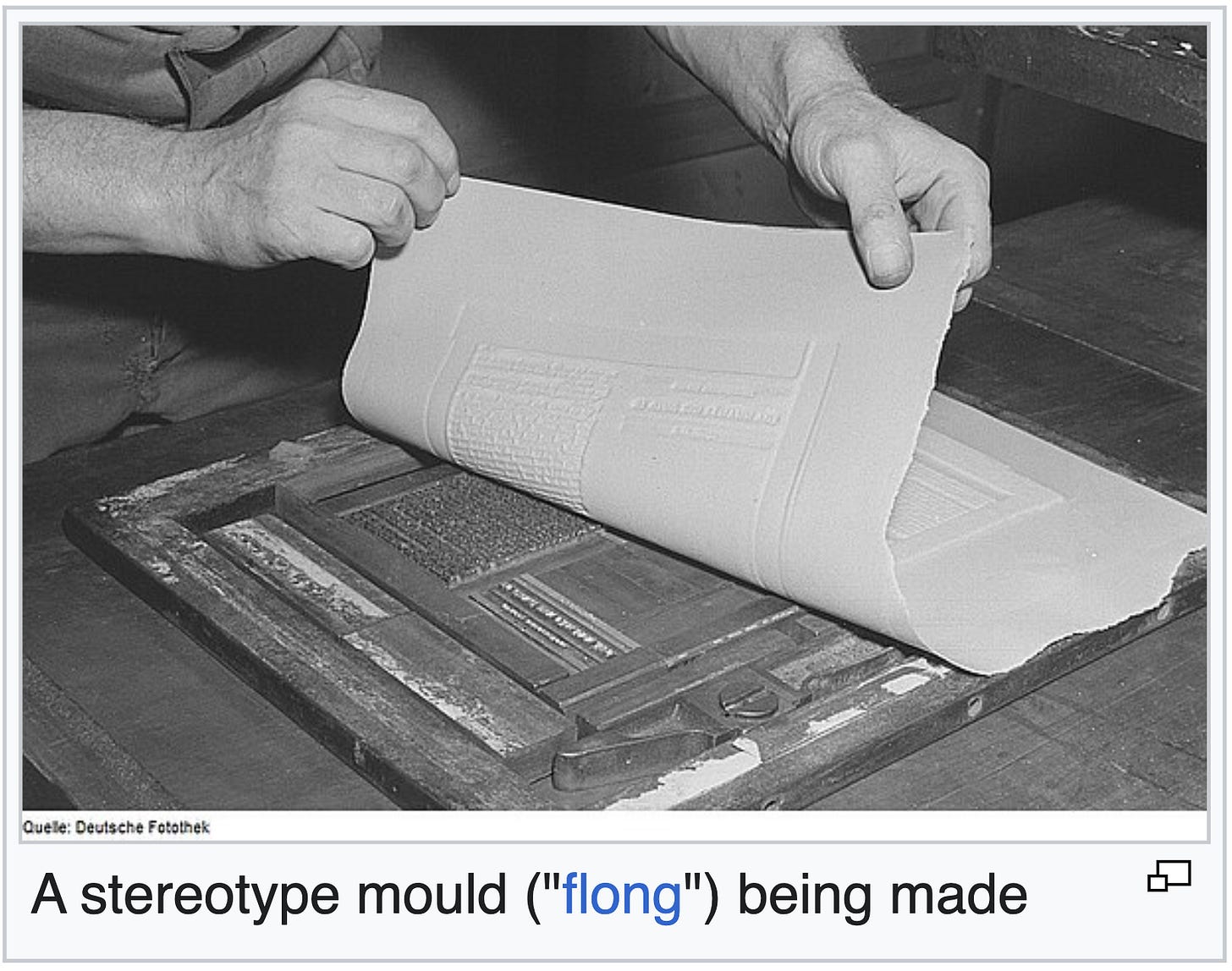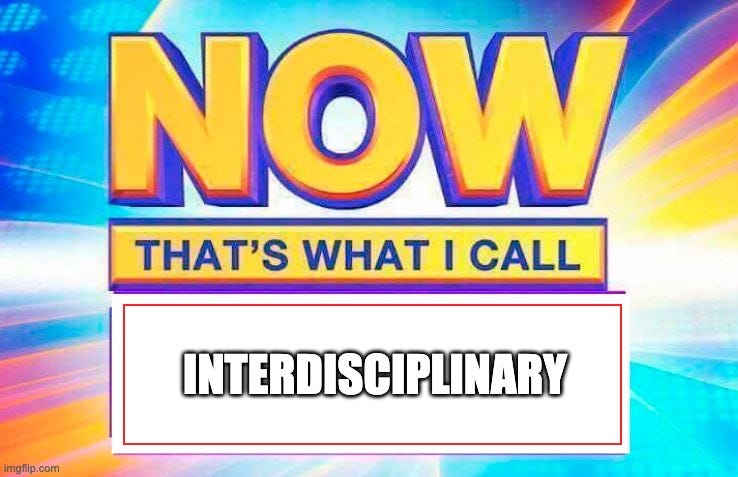COMPAS and cliché
an old rant on old things, enhanced with some Anne Carson pizzazz

It was in 2017, close to finals week, when my introductory CS professor mentioned the bombshell ProPublica report on the COMPAS algorithm, which already then was a few years old. Though I’d had my intuitive wariness of algorithmic systems, I remember then feeling like a sheer curtain had been drawn aside: the case study was such an obvious and stark illustration of how machine learning algorithms projected the patterns of the past into the future.
It’s no accident that I remember that example; it was soon joined by others that were coming to light in the same years. Cathy O’Neil’s Weapons of Math Destruction was still new then, having come out in 2016; Joy Buolamwini’s Gender Shades followed in 2018; so did Algorithms of Oppression by Safiya Noble and Meredith Broussard’s Artificial Unintelligence. All of them articulated the ways in which computing culture had enabled harmful and naïve computing systems to be used in high-stakes applications. I used them, and other shorter pieces—articles by Natasha Singer and Karen Hao and Sheera Frenkel—in my teaching of responsible computing at the time, into the first years of the 2020s.
Now, nearly ten years after the first of these examples came to light, I still see many of those same case studies given as motivating examples for talks on fairness research in algorithmic systems. They’re good examples; is it fair for me to bristle when I see them? I was trained back in my speech and debate days to never use examples more than a few years old. Recency means urgency, and what the repetition of these examples breeds is a feeling of cliché. Don’t we have other examples now?
One of my favorite essays on translation is Nay Rather, by Anne Carson, which urges creative, daring choices by translators, especially those that make clear that translation is not a transparent medium, that “languages are not algorithms of one another, you cannot match them item for item.”1 Carson believes in the untranslatable—the “residue” that remains between source and translation. The untranslatable word is one that “goes silent in transit,” which is to say that it brings little of its original self to the target language. And while I don’t agree with Carson on everything—I find translatability and the untranslatable to be very romantic concepts which may, perhaps, be practically irrelevant2—but I still find this essay useful as a place to start thinking, and I return to it often.
One of the key hinges of this essay is the word, and concept, of cliché. The cliché arises as a possible response to the untranslatable, which Carson describes as “maddeningly attractive.” When faced with an untranslatable word, the translator has two choices, according to Carson: cliché, or catastrophe, which is to say, making up something unexpected and strange and new that breaks the mold, that may or may not be initially comprehensible. There is rage in the untranslatable, Carson says, and it is a rage against understanding. Between cliché and catastrophe, it is clear where Carson wants us to go. She writes:
I say catastrophe is an answer because cliché is a question. We resort to cliché because it's easier than trying to make up something new. Implicit in it is the question, Don't we already know what we think about this? Don't we have a formula we use for this? Can't I just send an electronic greeting card or Photoshop a picture of what it was like rather than trying to come up with an original drawing?
In Carson’s understanding, cliché is a placeholder, gesturing at that thing we all know without describing or elucidating it in any way. It lulls us into feeling like we know what we’re all talking about. The essay is from 2013, which is clearly visible in Carson’s disdain for e-cards and Photoshop. In 2025, these examples of cliché seem not just nostalgic but almost sincere—the updated cliché would be prompting an LLM to write your birthday wishes or generate the image you decide to use in place of a drawing. LLMs are machines that specialize in cliché. Much to Carson’s disappointment, I’m sure, cliché turns out to be very effective.
I’m still disappointed when I see “tech ethics” talks begin with a standard, cliché’d example. When so much of the discourse around technology is itself mired in cliché—this product will “change the world,” it will “fuel productivity,” it will “destroy humanity,” it heralds “AGI” and we need to protect from “catastrophic risk”—why do even those who are supposed to challenge that feel compelled to invoke certain examples, like an incantation? I find Carson’s elucidation of cliché to be useful here, because the point of invoking these examples, ten years on, is precisely to use them as symbols without specifics. These examples no longer need to be situated or precise, since they have come to serve as a sign in their own right, each with a bundle of combed-over interpretations trailing behind it.
Let’s not forget, though, that the whole field of “responsible AI” and “tech ethics” arose from a profound sense of rage: rage against algorithmic harms, and against dispossession, and against life-changing, sometimes life-or-death decisions being made without clear reason or recourse. One thing that has not changed in ten years is the misapplication of algorithmic methods to human life, and I still find that maddening.
So why resort to cliché? My cynical answer is that maybe a lot of people in “tech ethics” have no interest in knowing whether and how new harms exist, nor how paradigms have changed, especially as our analysis and reporting on those examples in research and journalism alike is taking a more systemic, less tech-focused perspective. Many of the examples I see uncovered through qualitative research and reporting are not easily cast as technical problems, but rather as issues of ceding power to technology or using technology to mask accountability for decision-making. That was true of the COMPAS case study and all the other classic algorithmic bias examples, of course, but the way that they were cast—as localized, specific problems of algorithms misapplied or mis-managed—does not encompass the current level of entrenchment of algorithmic systems in our daily lives, the political power that the right-wing billionaires of Silicon Valley now have, the ways in which employers and universities are increasingly forcing the adoption of new generative systems.
When I see these examples in a talk, I’m overwhelmed with the feeling that the research subfield of “fairness” and perhaps “responsible AI” more broadly seems to cling feebly to a past where we were just discovering these issues and thought perhaps they could be helped, improved, through algorithmic means. I suppose what I’d like to see is more work that embraces rage, and yes, perhaps entertains catastrophe, which in many ways is already here.
Buy my books + recent mags!
Books
The Hand of the Hand by Laura Vazquez for Ugly Duckling Presse, translated by Shira Abramovich and Lénaïg Cariou of Limited Connection Collective
Description: The Hand of the Hand brings us to a future or an alternate universe in which earth, animal, and human intertwine—where stomachs have meadows, milk pours itself over trees, and flies wash the dead. Vazquez pulls deceptively simple, bare language into puzzling formations, creating an ambient unease. By turns lyrical and absurd, The Hand of the Hand explores the mystery and strangeness of what it means to be both speech and body, tongue and dirt.
Le Rêve d’un langage commun by Adrienne Rich (French) from L’Arche Éditeur, translated by Shira Abramovich and Lénaïg Cariou of Limited Connection Collective
Présentation: Ces poèmes d’Adrienne Rich sont un hommage aux femmes, à la prise de conscience et à la lutte pour l’existence – de l’intime politique. Dans Le Rêve d’un langage commun, la chercheuse Marie Curie, l’artiste Paula Becker et l’alpiniste pionnière Elvira Shataeva forment une constellation de guides dans une histoire empêchée, où la poésie devient lieu de mémoire et de transmission. Dans ce recueil phare de la poétesse, exploration intime de sa vie à 45 ans, se mêlent souvenirs amoureux, histoire et lutte sociale : disant pour la première fois ses amours avec une femme, elle marque durablement l’histoire littéraire.
Mags
I have a piece on the Web Content Accessibility Guidelines in the just-launched fifth issue of Kernel Magazine, themed around RULES! It’s going to be reaaaallly good, you guys. Buy it: https://shop.kernelmag.io/products/kernel-5.
For a taste, read the recently-released pieces via
this week—here’s ’s editor’s note as an introduction!
Lénaïg and I co-translated a number of poems by Laura Vazquez + Hortense Raynal in the latest issue of The Atlanta Review, which has a special feature on French poets! You can subscribe at http://atlantareview.com/subscribe/ :)
There is also a poem Lénaïg & I translated coming in hot in a forthcoming issue of FENCE. Will share more details as the date gets closer, but for now you can subscribe!
What I’ve been up to
I’ve been running around Montréal with my dear friend Nina! It’s been a fantastic highlights tour, including Kouing-Amann, Sans Soleil, Kem Coba, Drogheria Fine, and (to take a break from the food) the Montréal Botanical Garden.
Last week, I had a wonderful visit to Ann Arbor, MI, where I hung out at UMSI and met up with some lovely folks. On the way, we happened to stop for dinner at Red’s Root Beer, which was just absolutely magnificent as roadside food options go. You can eat on picnic tables or inside your car and you can buy root beer by the gallon. I highly recommend it!
This week, I went line dancing at Spurs, Montréal’s queer line dancing series. It was so delightful I genuinely almost wept.
I’ve been reading a lot, which has been a gift!
I read Lion by Sonya Walger and wound up feeling pretty meh about it. Not because it’s not a good read (it is) but because it’s autofiction and I still don’t really get the point of that genre, which I see as the americano of book genres: get a drip or an espresso, don’t give me a half-assed version of both. Why call a novel what’s (in this case) really more of a memoir?
I read one of the Montréal 1950s pulp murder mysteries by David Montrose, which was light and fun. After Montrose’s death, his books continued to be published with the bio stating that he was now “living in Toronto.” New euphemism for death unlocked!
I started The Philosophy of Translation by Damien Searls and I’m really enjoying it so far! It’s a nice book to take in morsels.
I joined a reading group on political economy and algorithms, and simultaneously started attending lab meetings with the NLP group I’m soon to be part of.
I bought a little moka pot that I’ve been using for my morning coffee each day. It’s sooooo tiny and it really improves my day—please send any moka brewing tips my way! (I already know to cool the pot so it doesn’t sputter and have been trying hot water to start.)
I’ve been eating a lot of watermelon + feta <3
It would have been more precise here to say that languages are not direct mappings of one another. In an essay on creative choice in translation, I suppose we can forgive Carson her imprecision?
It was also pointed out to me that Carson delights in ruination for its own sake, which I suppose I agree with, although isn’t that kind of…par for the course for classicists? Like isn’t that the whole point of the discipline?




